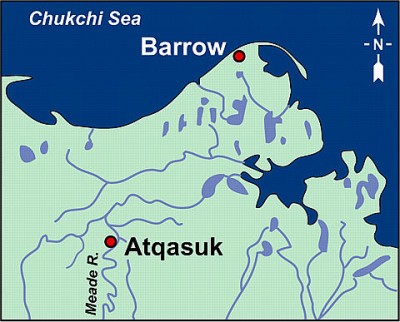
Arctic sea ice is an indicator of—and has an influence on—the rest of the Earth’s climate system. In particular, the link between sea ice-evaporation and precipitation has been identified as a fundamental component of climate dynamics. However, remarkably few evaporation and precipitation measurements are available to quantify this link. In January, scientists initiated a 2-year field campaign at the ARM North Slope of Alaska sites to obtain precipitation samples from storms passing through Barrow and Atqasuk. For storms that bring at least 2 mm of rain or 2 cm of snow, precipitation samples will be collected and sent to Dartmouth’s Stable Isotope Geochemistry Lab for analysis of oxygen and hydrogen isotope ratios. Scientists will use the data to study how moisture evaporated from the Arctic Ocean and surrounding seas contribute to precipitation in the Arctic regions, and how such moisture supplies are controlled by sea ice.
For a given storm, coastal and inland sites often receive different amounts of moisture from subtropical versus local sources. Storm tracks vary significantly, traveling over different type of surfaces such as open ocean, sea ice, and land. Scientists can look at weather patterns and their evolution related to a given storm to determine what part of the ocean surface contributes to the moisture budget of each storm. Using the isotopic data as well as weather and sea ice information, they can determine the individual influences of the ice-free area of the Arctic; storm tracks; atmospheric conditions at both moisture sources and precipitation sites; and circulation changes associated with the Arctic Oscillation and/or the North Atlantic Oscillation.
Information gained during the Effect of Sea Ice on Arctic Precipitation field campaign is expected to yield a quantitative understanding of the link between sea ice and moisture sources of Arctic precipitation. This knowledge is important in the study of climate dynamics on a wide range of time scales, as well as verification of climate models. The results will also provide insight for interpretations of climate information recorded in ice cores, which is relevant for testing global warming projections, abrupt global change scenarios, and ice age theories.

